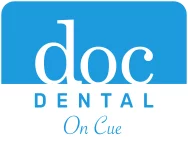The Facts of Gum Disease

Everyone knows about cavities and how they affect your teeth and your oral health, but you never hear very much about gum disease. What is gum disease? How can you protect your gums and teeth from gum disease? And what causes it anyway?
The Facts of Gum Disease
Gum disease (officially called periodontal disease) is the infection of the gums. It is caused by bacteria getting under your gum tissue and eroding your gums and teeth. If left untreated, gum disease can lead to many health issues, including tooth loss, heart disease, stroke and diabetes.
Gingivitis is an early stage of gum disease that manifests as inflammation. Your gums might be swollen and red, and they might bleed when you brush your teeth or floss. Gingivitis can be treated by maintaining your oral health with regular brushing, flossing and visits to your dentist.
Periodontitis is a more serious form of gum disease that erodes the bone and tissues surrounding your teeth. If left untreated, periodontitis can cause you to lose your teeth!
Causes of Gum Disease
Gum disease occurs when plaque builds up on your teeth, so the best thing you can do to combat it is to clean your teeth regularly!
Gum disease is caused by a variety of factors and has been linked to illnesses that affect your immune system. You are at a higher risk for gum disease if you have cancer, diabetes and HIV, because your immune system can’t fight the bacterial infections that might lead to periodontal disease as well.
Smokers, pregnant women and people with high stress levels are also at risk, and some medications that cause dry mouth can put you at risk as well.
How to Treat Gum Disease
In its early stages, gum disease can be managed and prevented by regular brushing and flossing. Visiting your dentist for a professional cleaning goes a long way toward keeping your gums and teeth healthy as well! If your dentist sees signs of gum disease during your dental exam, they can do deep cleanings called scaling and root planing to remove plaque and tartar from your teeth and keep your gums healthy. If your gum disease is more serious, it might require surgeries, such as gum tissue or bone grafts.
How Do I Know If I Have Gum Disease?
If your gums bleed when your brush or floss, or if you notice your gums are red, swollen or painful, please tell us right away at your next appointment. But keep in mind that many people who have the early stages of gum disease experience no obvious symptoms or pain.
Please note that there is no cure for gum disease. Once you have gum disease it can be treated and managed, but not cured. This makes prevention and early detection of the disease vital to keeping your mouth as healthy as possible.
Dentists and hygienists are trained to detect the signs of gum disease. That’s why controlling gum disease through regular cleanings is such a good way to take care of your teeth—and your overall health!
